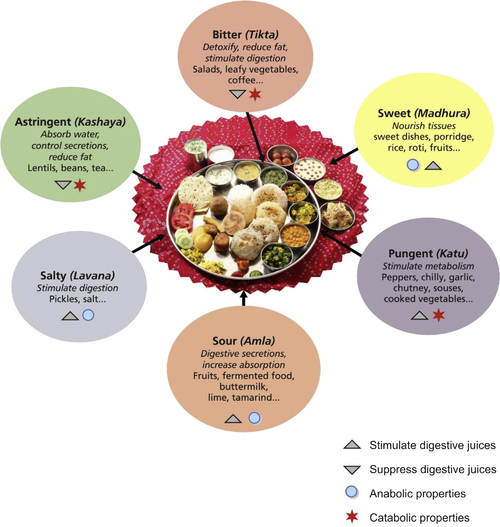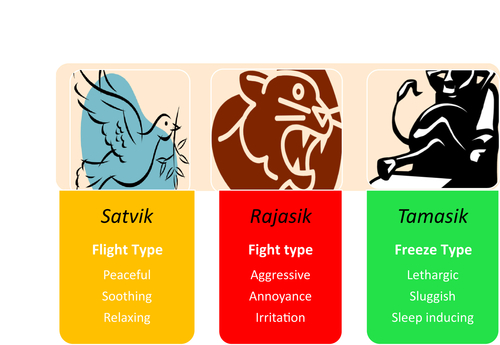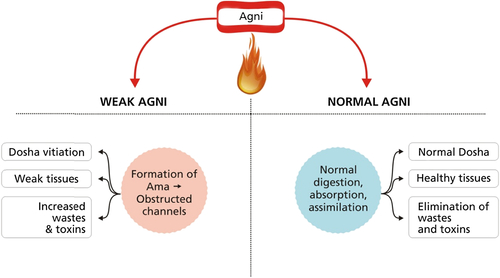[1] Kaplan D. The philosophy of food. Berkeley: University of California Press; 2012 Available from: http://www.foodtimeline.org.
[2]
http://www.foodtimeline.org.
[3] Dal A. Food in the ancient world from A to Z. London: Routledge. 2003.
[4] Jeffery R.W, French S.A. Epidemic obesity in the United States: are fast foods and television viewing contributing? Am J Public Health. 1998;88(2):277–280.
[5] Helmchen L.a, Henderson R.M. Changes in the distribution of body mass index of white US men, 1890–2000. Ann Hum Biol. 2004;31(2):174–181.
[6] Ogden C.L, Carroll M.D, Kit B.K, Flegal K.M. Prevalence of obesity in the United States, 2009–2010. NCHS Data Brief. 2012(82):1–8.
[7] Hopkins F.G. Feeding experiments illustrating the importance of accessory factors in normal dietaries. J Physiol. 1912;44(5–6):425–460.
[8] Ye R, Scherer P.E. Adiponectin, driver or passenger on the road to insulin sensitivity? Mol Metab. 2013;2(3):133–141.
[9] Tsujino N, Sakurai T. Orexin/hypocretin: a neuropeptide at the interface of sleep, energy homeostasis, and reward system. Pharmacol Rev. 2009;61(2):162–176.
[10] Kheradmand A, Dezfoulian O, Tarrahi M.J. Ghrelin attenuates heat-induced degenerative effects in the rat testis. Regul Pept. 2011;167(1):97–104.
[11] Meier U, Gressner A.M. Endocrine regulation of energy metabolism: review of pathobiochemical and clinical chemical aspects of leptin, ghrelin, adiponectin, and resistin. Clin Chem. 2004;50(9):1511–1525.
[12] Lake J.I, Heuckeroth R.O. Enteric nervous system development: migration, differentiation, and disease. Am J Physiol Gastrointest Liver Physiol. 2013;305(1):G1–G24.
[13] Gershon M.D. 5-Hydroxytryptamine (serotonin) in the gastrointestinal tract. Curr Opin Endocrinol Diabetes Obes. 2013;20(1):14–21.
[14] Mayer E.A. Gut feelings: the emerging biology of gut-brain communication. Nat Rev Neurosci. 2011;12(8):453–466.
[15] Montiel-Castro A.J, González-Cervantes R.M, Bravo-Ruiseco G, Pacheco-López G. The microbiota-gut-brain axis: neurobehavioral correlates, health and sociality. Front Integr Neurosci. 2013;7:70. doi: 10.3389/fnint.2013.00070.
[16] Bischoff S.C. “Gut health”: a new objective in medicine? BMC Med. 2011;9:24. doi: 10.1186/1741-7015-9-24.
[17] Du Y, Yang M, Lee S, Behrendt C.L, Hooper L.V, Saghatelian A, et al. Maternal western diet causes inflammatory milk and TLR2/4-dependent neonatal toxicity. Genes Dev. 2012;26(12):1306–1311.
[18] Kelly S.A, Summerbell C.D, Brynes A, Whittaker V, Frost G. Wholegrain cereals for coronary heart disease. Cochrane Database Syst Rev. 2007(2):CD005051.
[19] Hinderliter A.L, Babyak M.A, Sherwood A, Blumenthal J.A. The DASH diet and insulin sensitivity. Curr Hypertens Rep. 2011;13(1):67–73.
[20] Shirani F, Salehi-Abargouei A, Azadbakht L. Effects of dietary approaches to stop hypertension (DASH) diet on some risk for developing type 2 diabetes: a systematic review and meta-analysis on controlled clinical trials. Nutrition. 2013;29(78):939–947.
[21] Rees K, Hartley L, Flowers N, Clarke A, Hooper L, Thorogood M, et al. “Mediterranean” dietary pattern for the primary prevention of cardiovascular disease. Cochrane Database Syst Rev. 2013;8:CD009825.
[22] Panagiotakos D, Pitsavos C, Koloverou E, Chrysohoou C, Stefanadis C. Mediterranean diet and diabetes development: a meta-analysis of 12 studies and 140,001 individuals. J Am Coll Cardiol. 2014;63(12S):A1349.
[23] Estruch R, Ros E, Salas-Salvadó J, Covas M.-I, Corella D, Arós F, et al. Primary prevention of cardiovascular disease with a mediterranean diet. N Engl J Med. 2013;368(14):1279–1290.
[24] Thomas D, Elliott E.J. Low glycaemic index, or low glycaemic load, diets for diabetes mellitus. Cochrane Database Syst Rev. 2009(1):CD006296.
[25]
http://www.gmdietworks.com.
[26] Rees K, Dyakova M, Ward K, Thorogood M, Brunner E. Dietary advice for reducing cardiovascular risk. Cochrane Database Syst Rev. 2013;12:CD002128.
[27] Chowdhury R, Warnakula S, Kunutsor S, Crowe F, Ward H.A, Johnson L, et al. Association of dietary, circulating, and supplement fatty acids with coronary risk: a systematic review and meta-analysis. Ann Intern Med. 2014;160(6):398–406.
[28] Clarke A, Trivedi M. Bovine beta casein variants: implications to human nutrition and health. Int Conf Food Secur Nutr IPCBEE. 2014;67:11–17.
[29] Hunter P. We are what we eat. EMBO Rep. 2008;9(5):413–415.
[30] Gómez-Pinilla F. Brain foods: the effects of nutrients on brain function. Nat Rev Neurosci. 2008;9(7):568–578.
[31] Bouchard-Mercier A, Paradis A.-M, Rudkowska I, Lemieux S, Couture P, Vohl M.-C. Associations between dietary patterns and gene expression profiles of healthy men and women: a cross-sectional study. Nutr J. 2013;12:24. doi: 10.1186/1475-2891-12-24.
[32] Virmani A, Pinto L, Binienda Z, Ali S. Food, nutrigenomics, and neurodegeneration–neuroprotection by what you eat!. Mol Neurobiol. 2013;48(2):353–362.
[33] Acharya Y, ed. Caraka Samhita. Varanasi, India: ChaukhambaSurbharati; 1992.
[34] Vijay-Kumar M, Aitken J.D, Carvalho F.A, Cullender T.C, Mwangi S, Srinivasan S, et al. Metabolic syndrome and altered gut microbiota in mice lacking toll-like receptor 5. Science. 2010;328(5975):228–231.
[35] Sumantran V.N, Tillu G. Cancer, inflammation, and insights from Ayurveda. Evid Based Complement Altern Med. 2012;2012:306346. doi: 10.1155/2012/306346.
[36] Chopra A, Saluja M, Tillu G. Diet, Ayurveda and interface with biomedicine. J Ayurveda Integr Med. 2010;1(4):243–244.
[37] Chopra A. Ayurvedic medicine and arthritis. Rheum Dis Clin North Am. 2000;26(1):133–144.
[38] Wu T, Sun L, ZhuGe F, Guo X, Zhao Z, Tang R, et al. Differential roles of breakfast and supper in rats of a daily three-meal schedule upon circadian regulation and physiology. Chronobiol Int. 2011;28(10):890–903.
[39] Al Suwaidi J, Bener A, Gehani A.A, Behair S, Al Mohanadi D, Salam A, et al. Does the circadian pattern for acute cardiac events presentation vary with fasting? J Postgr Med. 2006;52(1):30–33.
[40] Rehman J.U, Brismar K, Holmbäck U, Åkerstedt T, Axelsson J. Sleeping during the day: effects on the 24-h patterns of IGF-binding protein 1, insulin, glucose, cortisol, and growth hormone. Eur J Endocrinol. 2010;163(3):383–390.
[41] Crispim C.A, Zimberg I.Z, Dos Reis B.G, Diniz R.M, Tufik S, De Mello M.T. Relationship between food intake and sleep pattern in healthy individuals. J Clin Sleep Med. 2011;7(6):659–664.
[42] Longo V.D, Mattson M.P. Fasting: molecular mechanisms and clinical applications. Cell Metab. 2014;19(2):181–192.
[43] Sumara G, Sumara O, Kim J.K, Karsenty G. Gut-derived serotonin is a multifunctional determinant to fasting adaptation. Cell Metab. 2012;16(5):588–600.
[44] Kincaid B, Bossy-Wetzel E. Forever young: SIRT3 a shield against mitochondrial meltdown, aging, and neurodegeneration. Front Aging Neurosci. 2013;5:48. doi: 10.3389/fnagi.2013.00048.
[45] Azevedo F.R. De, Ikeoka D, Caramelli B. Effects of intermittent fasting on metabolism in men. Rev Assoc Med Bras. 2013;59(2):167–173.
[46] Yarnell E. Proposed biomolecular theory of fasting during fevers due to infection. Altern Med Rev. 2001;6(5):482–487.
[47] Shushimita S, De Bruijn M.J, De Bruin R.W, IJzermans J.N, Hendriks R.W, Dor F.J. Dietary restriction and fasting arrest B and T cell development and increase mature B and T cell numbers in bone marrow. PLoS One. 2014;9(2):e87772. doi: 10.1371/journal.pone.0087772.
[48] Colman R.J, Beasley T.M, Kemnitz J.W, Johnson S.C, Weindruch R, Anderson R.M. Caloric restriction reduces age-related and all-cause mortality in rhesus monkeys. Nat Commun. 2014;5:3557. doi: 10.1038/ncomms4557
.
[49] Zhao G, Guo S, Somel M, Khaitovich P. Evolution of human longevity uncoupled from caloric restriction mechanisms. PLoS One. 2014;9(1):e84117. doi: 10.1371/journal.pone.0084117.
[50] Robertson L.T, Mitchell J.R. Benefits of short-term dietary restriction in mammals. Exp Gerontol. 2013;48(10):1043–1048.
[51] Joseph P.G. Serotonergic and tryptaminergic overstimulation on refeeding implicated in “enlightenment” experiences. Med Hypotheses. 2012;79(5):598–601.


